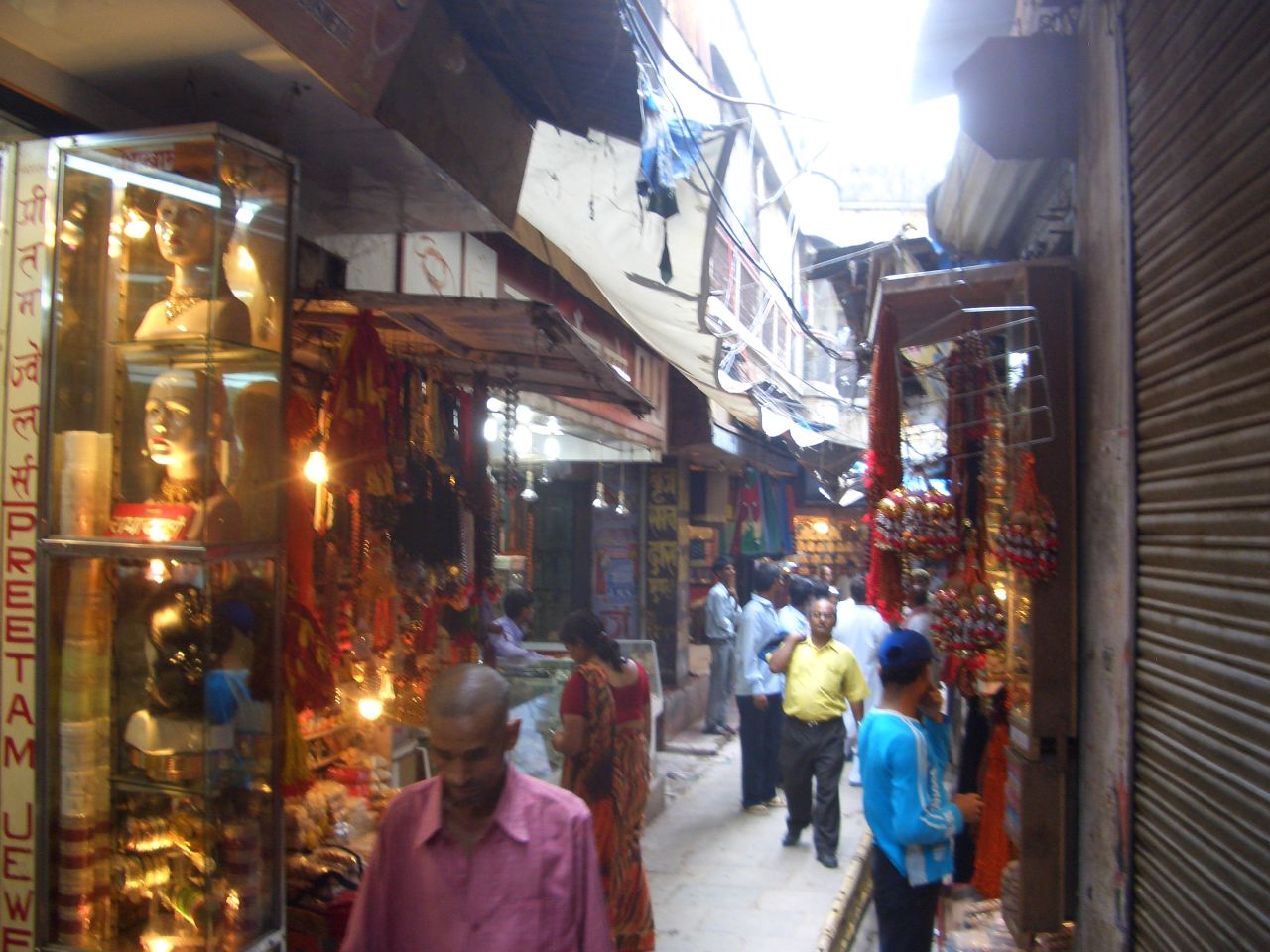
The streets were incredibly crowded as we made our way down very narrow streets. Soon we arrived at a little shop where we were told to leave everything but ourselves, so we stored our backpacks, cameras and anything else we were carrying in lockers as nothing was allowed inside this temple. Unfortunately I was not able to get any pictures.
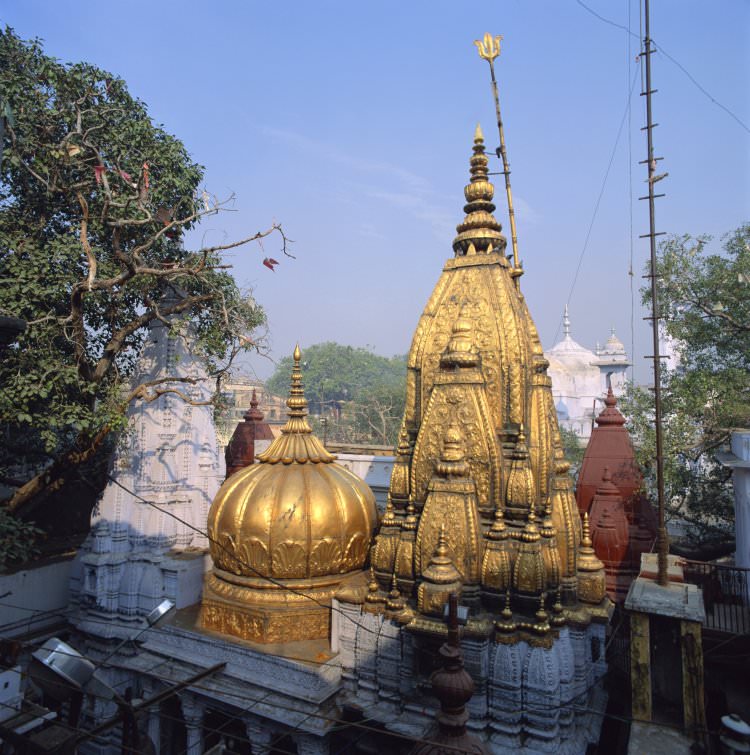
“Varanasi is the city of Shiva, and this temple is the center of Shiva worship in the city.
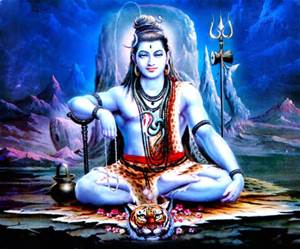
Located on a crowded lane, neither big nor spacious, it is not a very impressive temple. But devotees throng to it in thousands to pray for worldly benefits and for Moksha (freedom). It is difficult to say when this temple was first established, but it is probably as old as Shiva worship in North India. It has had a tough history, having been destroyed by Mughal rulers many times and yet rising, phoenix-like, again. The temple was destroyed for the last time by Aurangzeb in the seventeenth century and a mosque was built in its place. Later the temple was rebuilt by the Marathas. The priests assert that the Shiva linga installed in the temple is the original one that has been worshipped for thousands of years. Apart from the Shiva linga there is also an image of Shiva, of which darshan is permitted only twice a year on special festival days.
The temple is located in the Vishwanath Gali. In and around the temple there are numerous other gods and goddesses, the most important being the goddess Annapurna, who shares the temple with Lord Shiva.
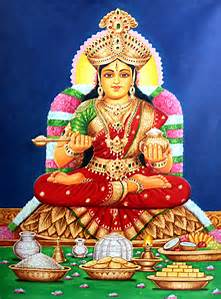
Annapurna means “provider of food”, and in Varanasi the goddess is considered the mother who provides nourishment and sustains life. It is said that Shiva and Annapurna make a pact in Kashi: she would look after life before death, ensuring that no one ever went hungry within the sacred city, while he would take care of life after death, ensuring that everyone from Kashi received Moksha.
The giving and receiving of alms is an important element of Hindu practice, and Annapurna is supposed to be the most generous alms-giver of them all. She sets an example which the citizens of Varanasi follow. By their alms the householders support the floating population of sanyasis (distintive in their faded orange clothing, are people who have given up a settled domestic life and become perpetual wanderers and seekers) and widows, who flock to the city. The temple itself does not serve as a charitable institution. It is just that the image of Annapurna as the generous mother sets an example for the householders to follow. There is a great festival called Annakuta which dramatizes Annapurna’s role as a provider of food. Mountains of food and sweets are elaborately arranged in the temple and later distributed as prasad to devotees who come to Annapurna on this day.” (Banaras, Roli Books)
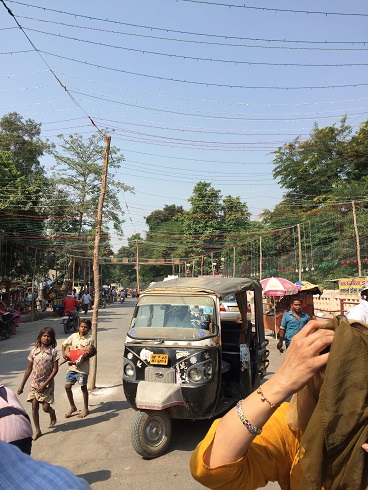
Next we headed for Sarnath.
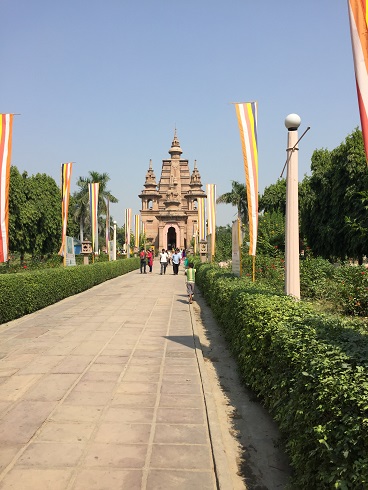
Sarnath is one of the most important places of worship for Buddhists, the world over.
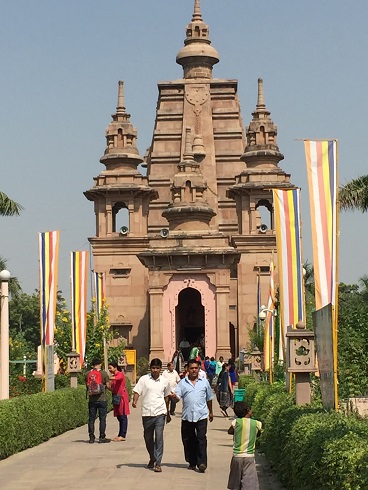
Sarnath, about seven miles to the north of Varanasi, is a tiny hamlet where the Buddha, after attaining enlightenment at Bodh Gaya, preached his first sermon 2400 years ago. Called “The Turning of the Wheel” the sermon summed up the essentials of Buddhist teachings. Focusing upon suffering, the Buddha argued that the cause of suffering was desire, and that if man wished to get rid of suffering he must first get rid of desire.
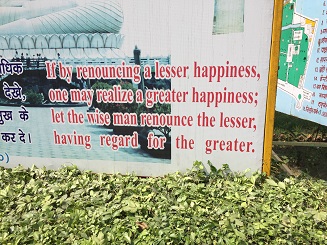
As we were walking up to the temple, these signs lined the path.
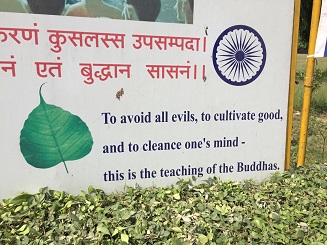
We are very used to hearing “Buddha says” motivational sayings, so it just seemed right that these lined the walkway.
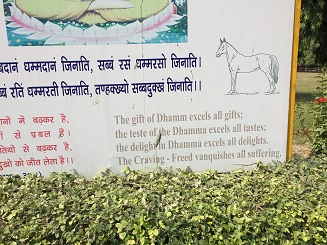
Written in numerous languages, many of the visitors stopped to read these on their way in.
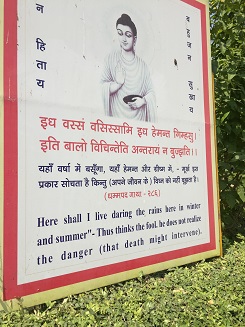
A wandering teacher during much of his life, the Buddha travelled over the eastern Gangetic plain, preaching his doctrines, but he often stayed at the monastery in Sarnath during the monsoon months.
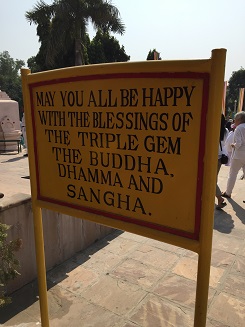
In later years, Sarnath became not only an important center of Buddhist art and thought but also one of the holiest shrines of Buddhism, visited by devotees from all parts of the world.
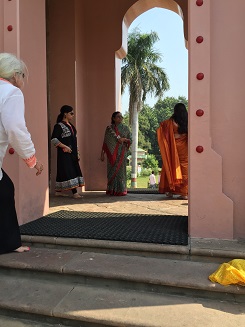
But the Buddha left God and divinity out of his system. Being an atheistic religion, Buddhism does not see God as essential to the universe, but acknowledges a natural cosmic rise and decline. It holds that the universe originally had been a place of bliss, but by giving in to desire, man made it a place of suffering. Man’s salvation lies in freeing himself from desire and achieving nirvana or extinction, freedom from the wheel of rebirth.
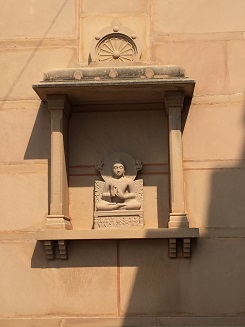
After the death of its founder, Buddhism continued to flourish in Varanasi. Its high point was the reign of the great Mauryan emperor, Ashoka (272-232 BC). Since his empire covered most of north India, he ruled over what was perhaps the largest and the most powerful state in the world at that time. Early in his rule, Ashoka fought a bloody battle in Kalinga (now Orissa) for access to its seaports and Chinese trade. Thousands were killed and the country laid waste. Devastated by the carnage, Ashoka renounced violence and adopted the pacifist creed of Buddhism. He used the rest of this long life and the resources of his vast empire to spread the message of Buddhism all over Asia.
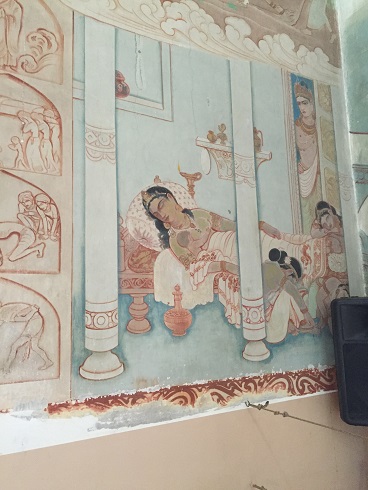
Inside the Shrine, were numerous scenes from the Jataka Tales which tell of incidents from the previous lives of the Buddha.
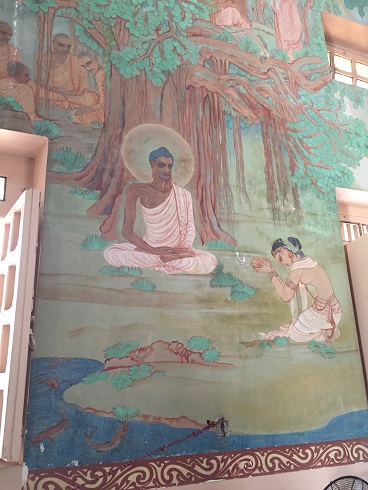
These paintings tell the story of the Buddha from birth, through all the stages of his life.
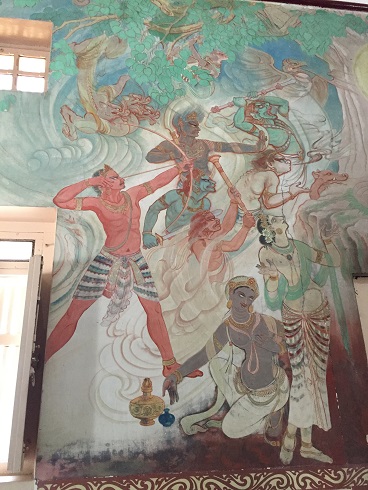
From Warrior
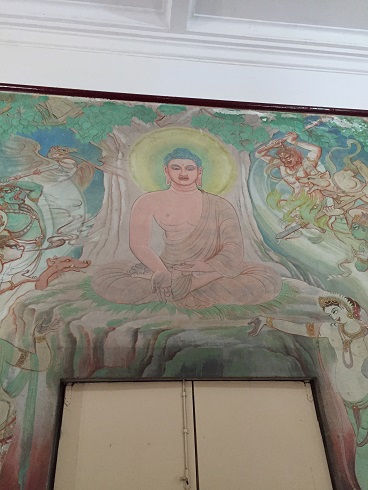
to Grand Master.
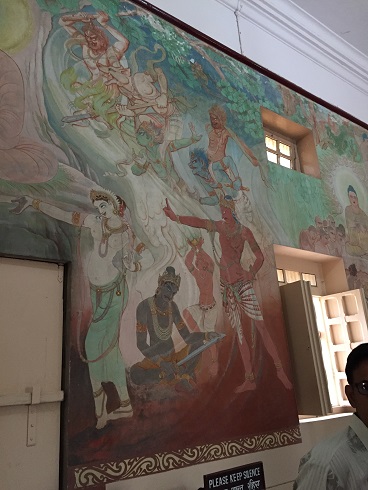
The Buddha attaining parinirvana or supreme nirvana, the final release from the cycle of birth and rebirths.
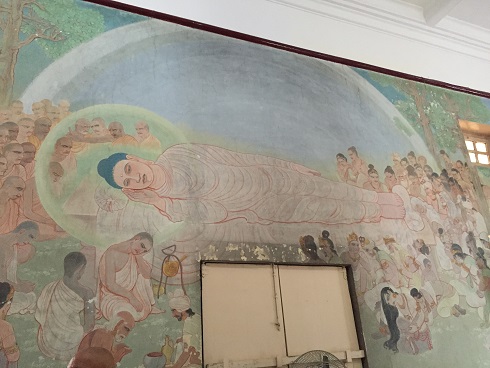
As he lies on his right side, under the sal trees in the suburbs of Kushinagara, he addresses his monks for the last time: Brothers, remember these words: everything is perishable. Work out your salvation with diligence.
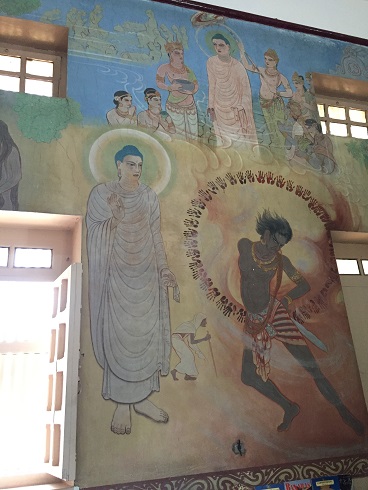
Then he enters into contemplation and at the end of the last watch, just before dawn, on the first day of the full moon in the month of May, he loses his individuality and becomes universal. The earth shakes, the sal trees blossom and the sky rains down perfumed petals to the sound of divine music.
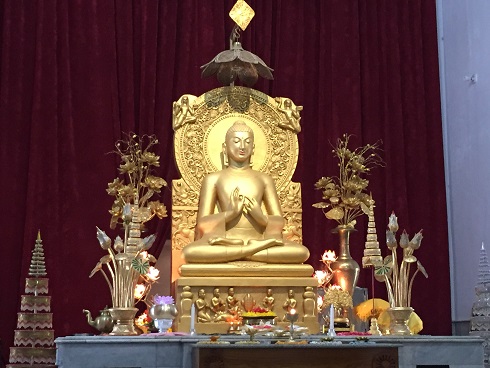
This incredibly beautiful image of Buddha is at the alter in the main temple in Sarnath.

Many Monks can be seen in and around this temple.
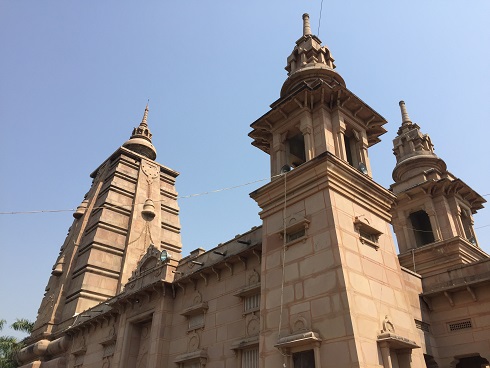
The outside of the temple.
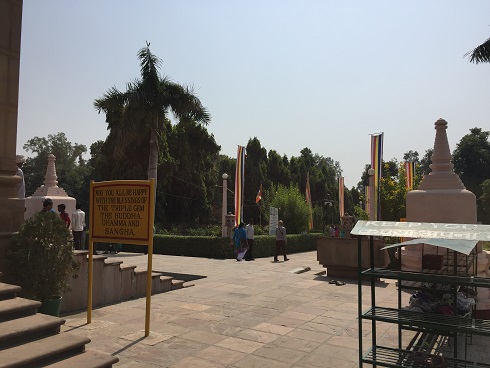
The grounds were beautiful with many old trees and flowers.

I loved these wheels, representing Buddha’s first sermon the “Wheel of the Dharma”.
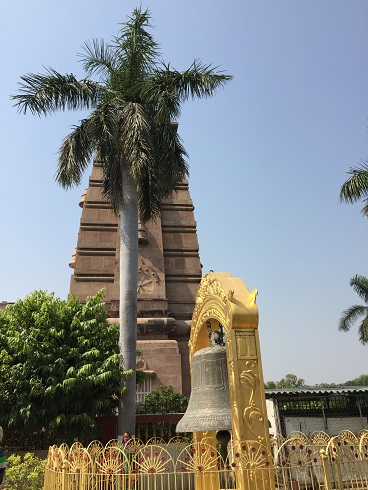
Mulagandhakuti Vihara is the main Buddhist temple in Sarnath. It was built in 1931 by Bodhi Sattva Anagarika Dharmapala. It is said to be located at the place where Buddha used to stay during his visits to Sarnath. Mulagandhakuti Vihara is a magnificent structure with ancient Buddhist architectural decorations carved on Indian red stone with an image of Buddha inside it. Buddha’s relics discovered at Taxila are enshrined underneath the pedestal of the image. There are also fine paintings on the walls by Japanese artist Kosetsu Nosu. Buddhist services are conducted inside the temple.
A huge World Peace bell was installed in the Bodhi Tree courtyard next to the Mulagandhakuti Vihara. It is craved with Buddhist texts and it is said that its sound is heard up to 7 kilometres away. The bell was donated by the Japanese Buddhist community in 2005 to replace a previous broken bell.
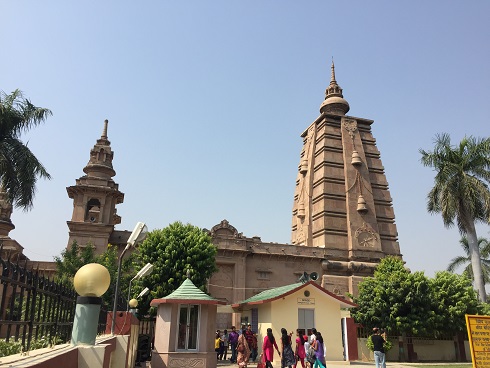
Whether from the front or side, the temple itself was so beautiful.
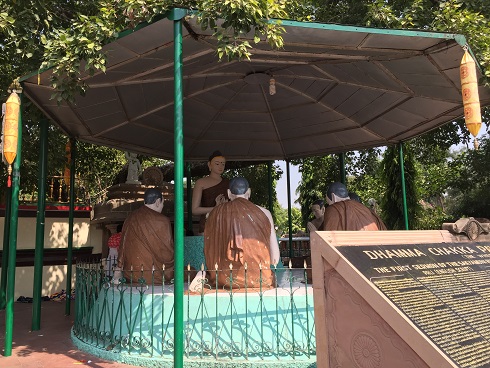
Statues depicting Buddha preaching to his disciples are found in a complex directly to the side of the temple.
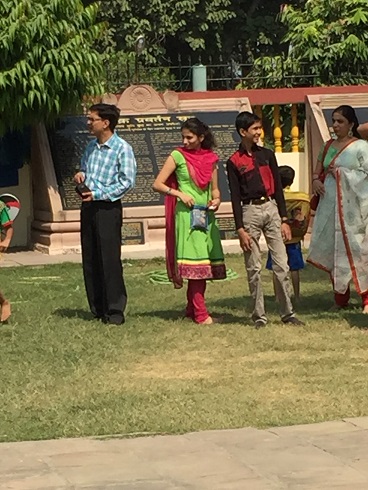
Again, I am always drawn to taking pictures of beautiful sarees.
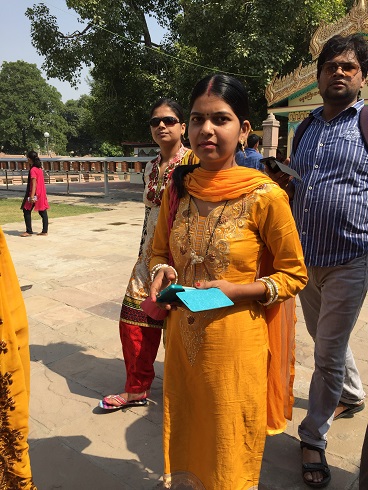
And of the beauty of the Indian women.
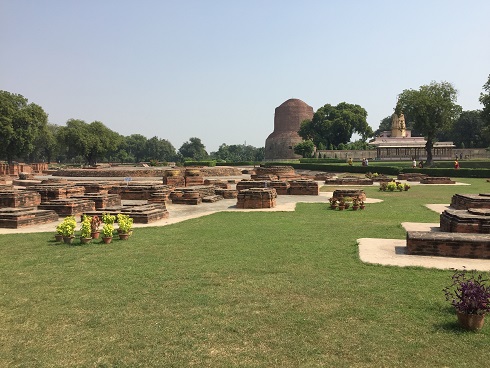
At Sarnath there are many monuments built by the great Ashoka. In Deer Park, the Chaukhandi Stupa marks the place where the Buddha preached his first sermon. Ashoka must have undertaken other constructions, but only the first two stupas and a pillar with his inscription survive.
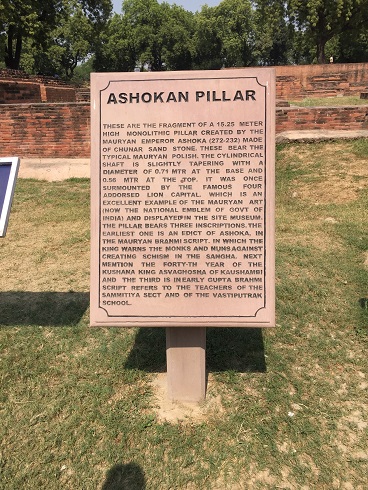
The Chaukhandi Stupa: The Chaukhandi Stupa is a simple 98-foot high red brick octagonal structure, situated on a small hillock on the road that goes to Sarnath. A Persians inscription over one of the doorways of the stupa states that the octagonal brick tower on top of the building was erected by Gobardhan at the orders of Emperor Akbar in 1589 AD because Akbar’s father Humayun once took shelter there!
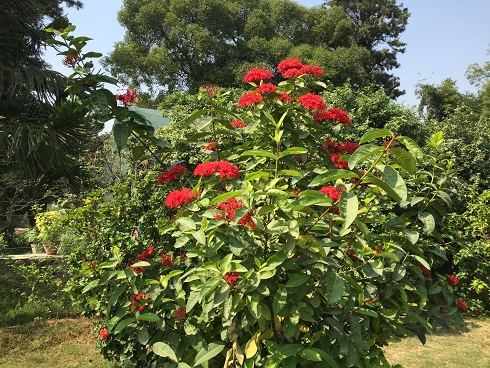
There is a walk that allows you to stroll the property and view these beautiful grounds from different directions, as well as enjoy the calm and peaceful atmosphere. Many couples and families were sitting in the park talking and playing.
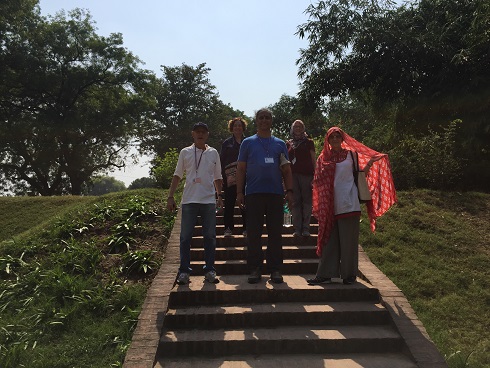
Here is our group on the steps. I just remember how hot it was! LOL, Pittas have a hard time with heat and it was very hot. We would wet our scarves with the water from the hoses of the yard maintainance workers and drape them around our bodies trying to stay cool.
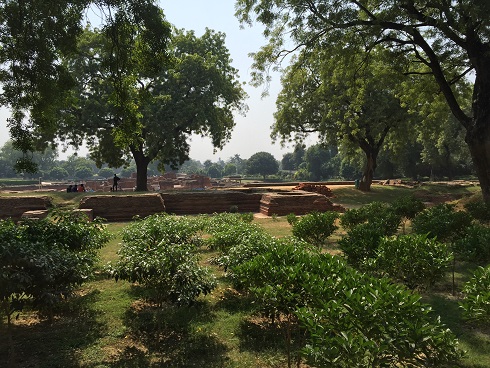
The huge Dhamek Stupa marks the place where Buddha preached his first sermon. The Dhamek is an abbreviation of a Sanskrit word dharmika which means Preacher of Dharma. The site of the stupa is believed to be exactly the place where the Buddha preached his second sermon to his first five disciples.
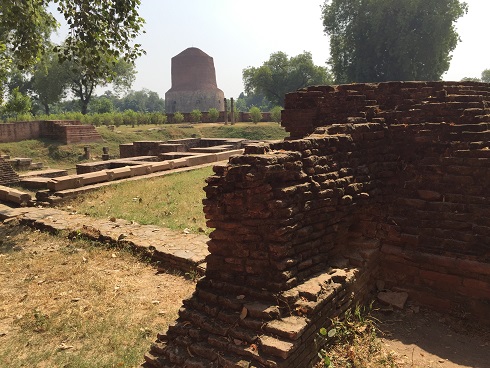
The Brahmins fought the tide of Buddhism as best they could but for the next few centuries Buddhism replaced Brahminism as the dominant religion in Varanasi. The Kushan king Kanishka in the first century AD extended state patronage to Buddhism. During the Gupta Age, (from the fourth to the sixth century AD). Sarnath retained its importance and emerged as a major center of Buddhist art. Sarnath however continued to flourish till the advent of Islam in the twelfth century. (Banaras, Roli Books)
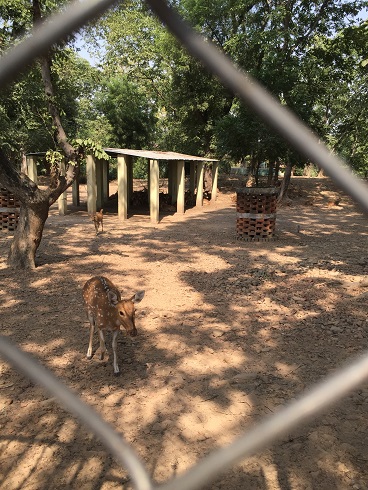
Deer Park also serves as a refuge for deer. Off to the back edge of the property we found these little tiny deer. They were so cute as they came to the fence to say hello.
We then spent an hour or so in the museum at Sarnath. It reminded me of many of the museums I have been in around the world from Greece to Italy. We then found our way back to the hotel to have a few hours to rest before our big evening event.
Keep reading, tonight we go back to the river and tomorrow to some other temples.
